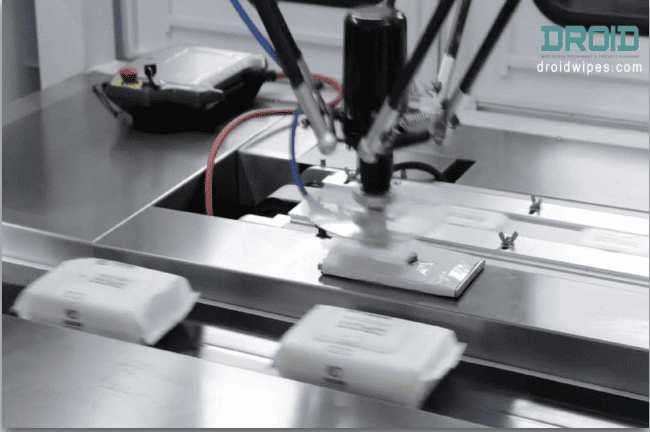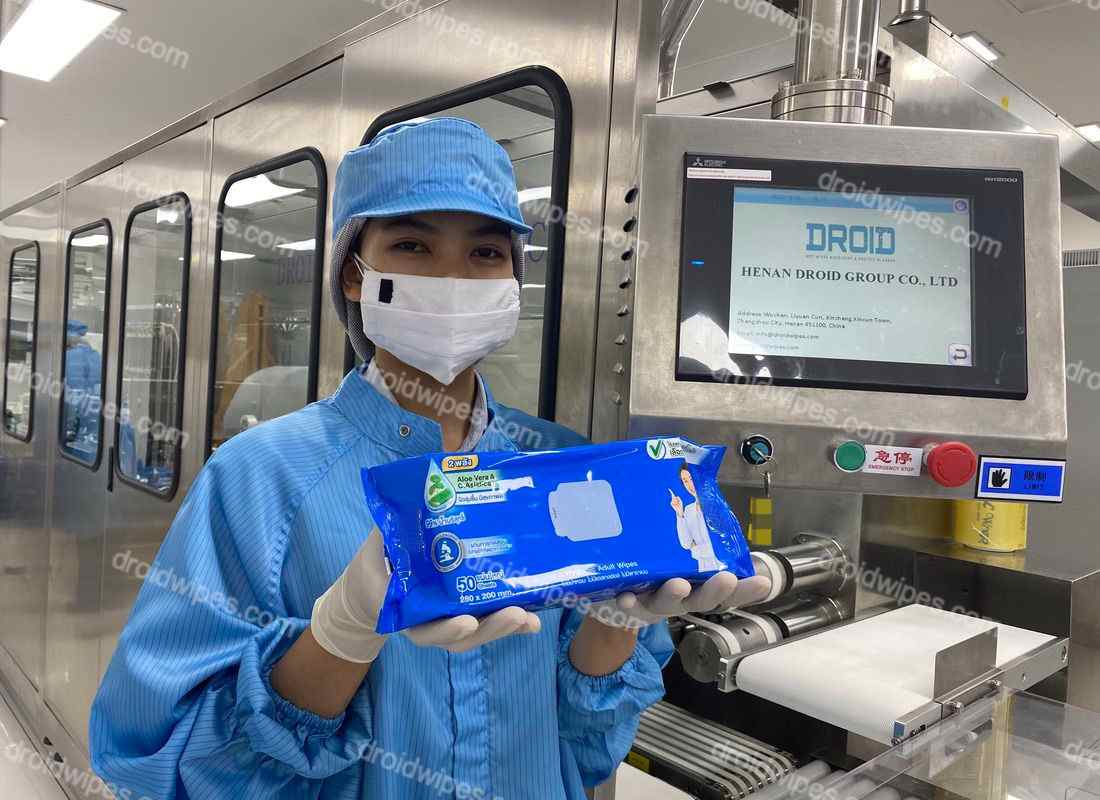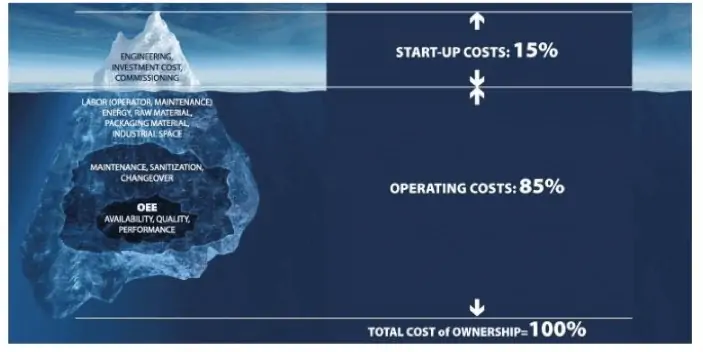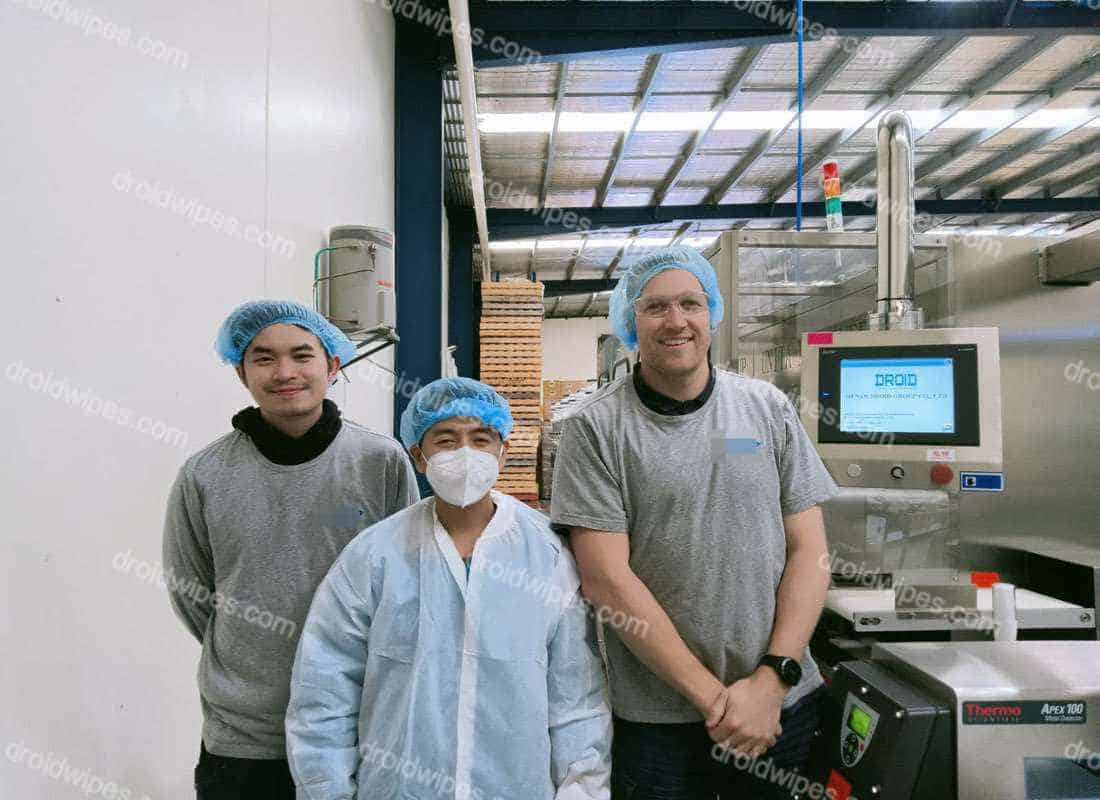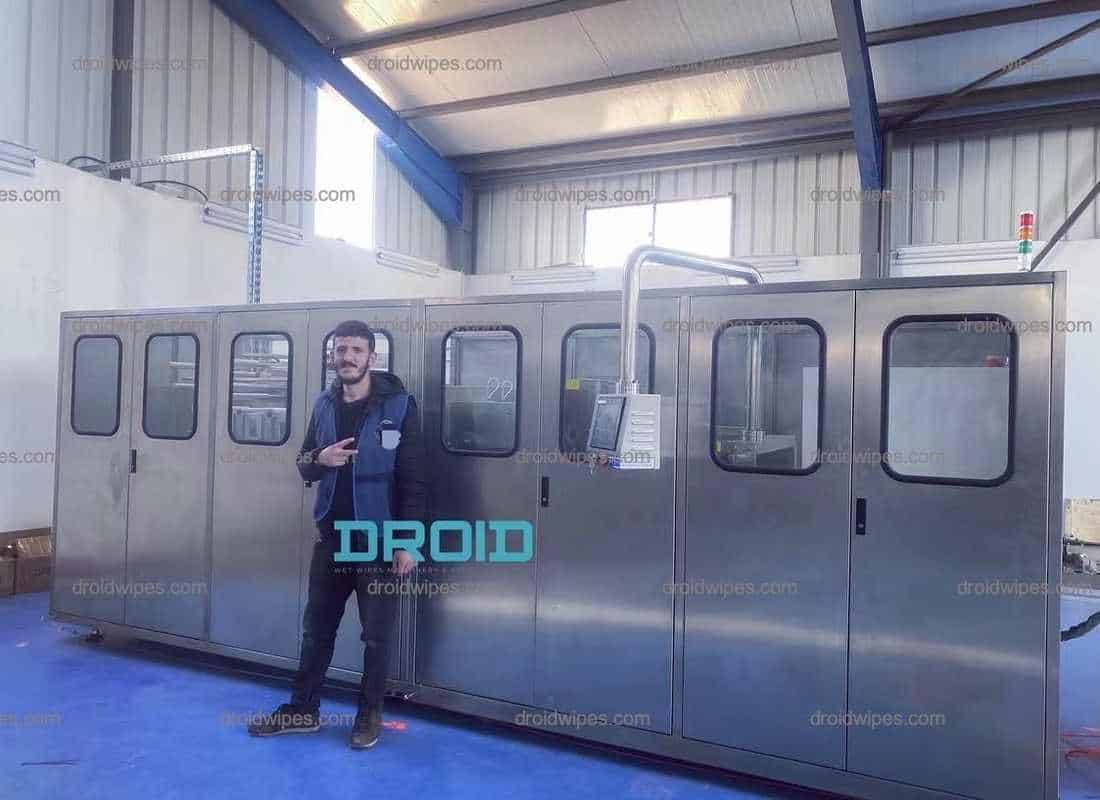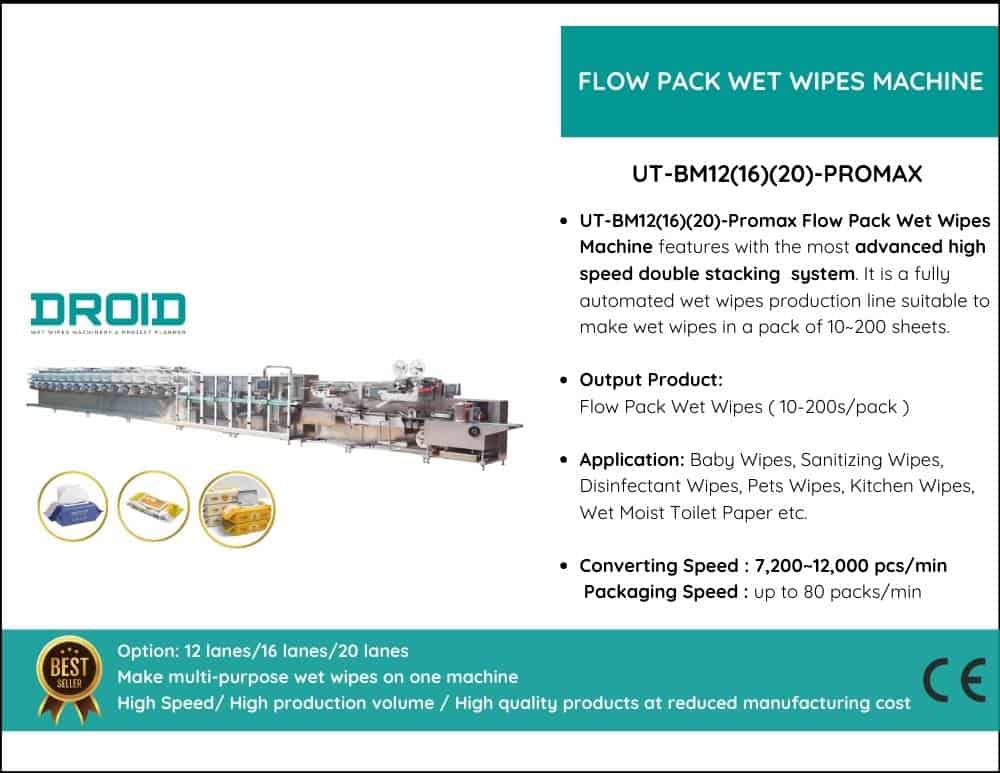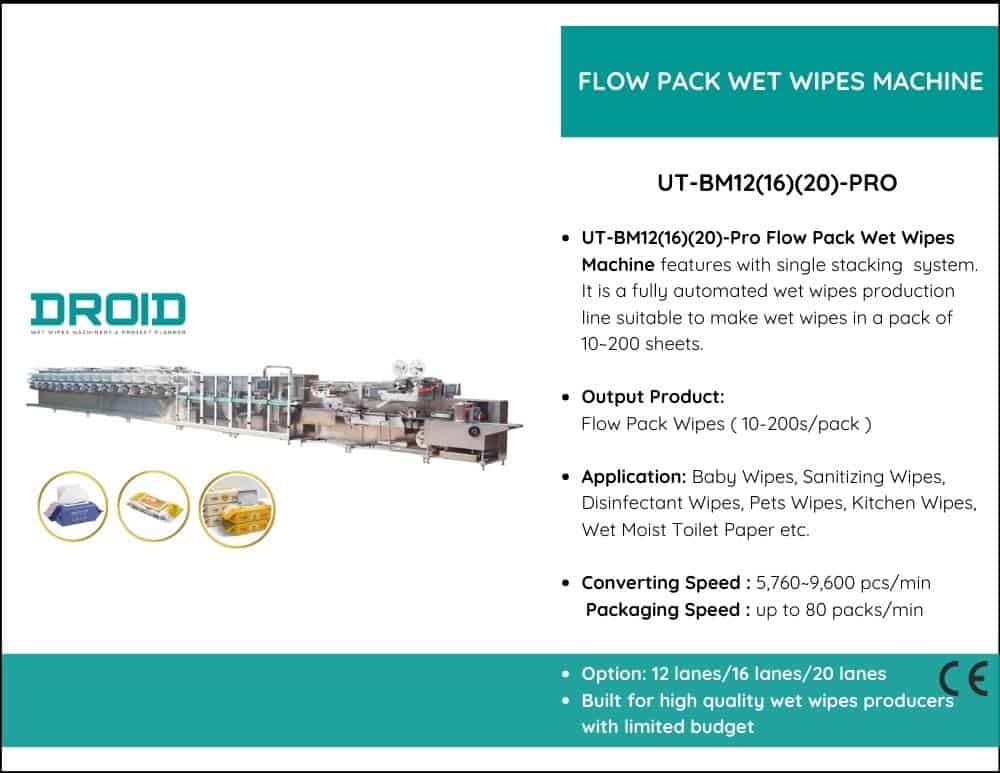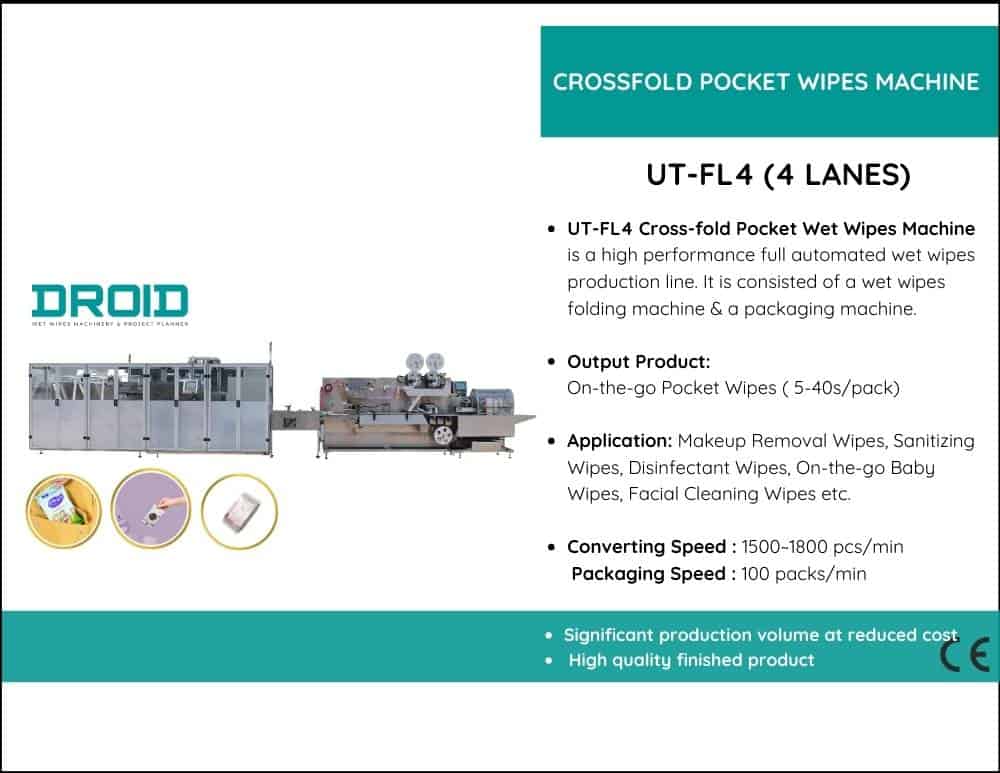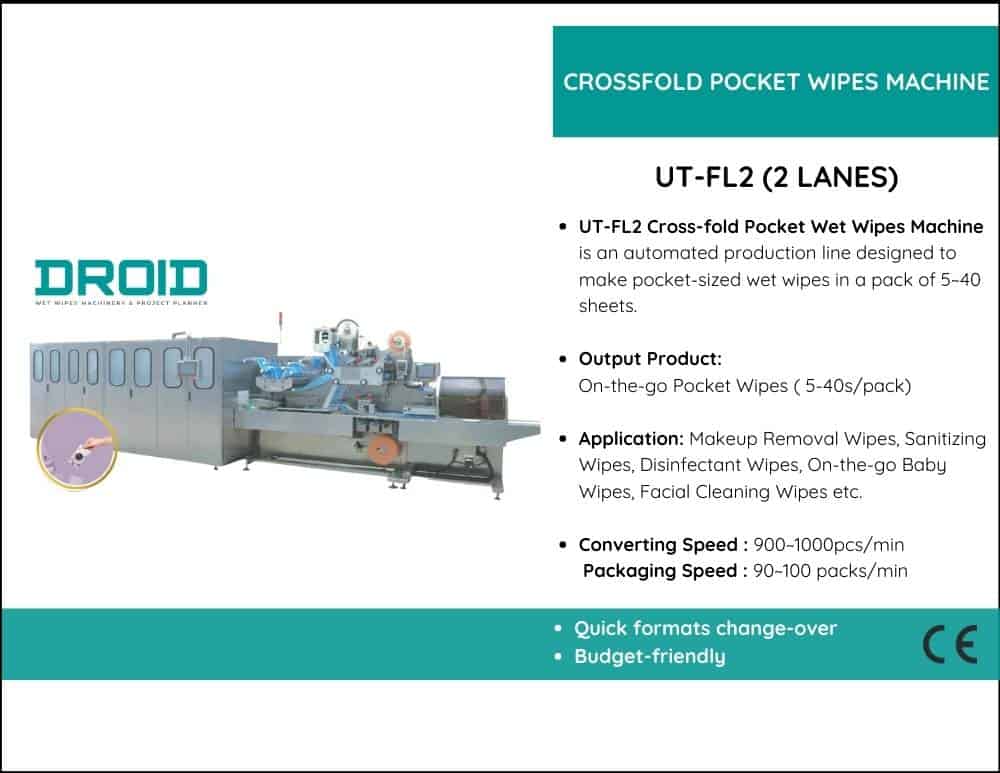Production lines for wet wipes are available in a variety of designs to accommodate varying production requirements, financial constraints, and company sizes. Each of the three primary categories—fully automated, semi-automatic, and integrated packaging lines—offers exceptional benefits.
1. Production Lines for Completely Automatic Wet Wipes
Without the need for human intervention, these lines manage every step of the process, from unwinding and cutting the nonwoven fabric to moistening, folding, and packaging. They are ideal for large enterprises seeking efficiency and mass production, as they offer high-speed output, consistent product quality, and low labor costs.
2. Production Lines for Semi-Automatic Wet Wipes
Semi-automatic systems combine human labor, often in tasks such as stacking or packing, with automated processes like cutting and folding. They are a good fit for startups, small businesses, or companies testing new markets before scaling up because they are more flexible and reasonably priced.
3. Lines of Integrated Packaging
In addition to producing wet wipes, these cutting-edge lines combine many packaging choices—from tubs and soft packs to single sachets—into a single, efficient system. For wet wipe manufacturers that must provide a variety of product configurations, this approach enhances adaptability, reduces handling, and improves cleanliness.
Specific manufacturing lines, such as those for baby wipes, disinfecting wipes, or biodegradable wipes, are also designed for particular markets. These markets may require additional features, such as lid applicators, precise liquid dosing systems, or compatibility with environmentally friendly materials.
To put it simply, your production size, product line, and investment budget will determine whether you choose a fully automated, semi-automatic, or integrated packaging line. Each type offers a distinct combination of speed, cost, and flexibility for your wet wipes company.


